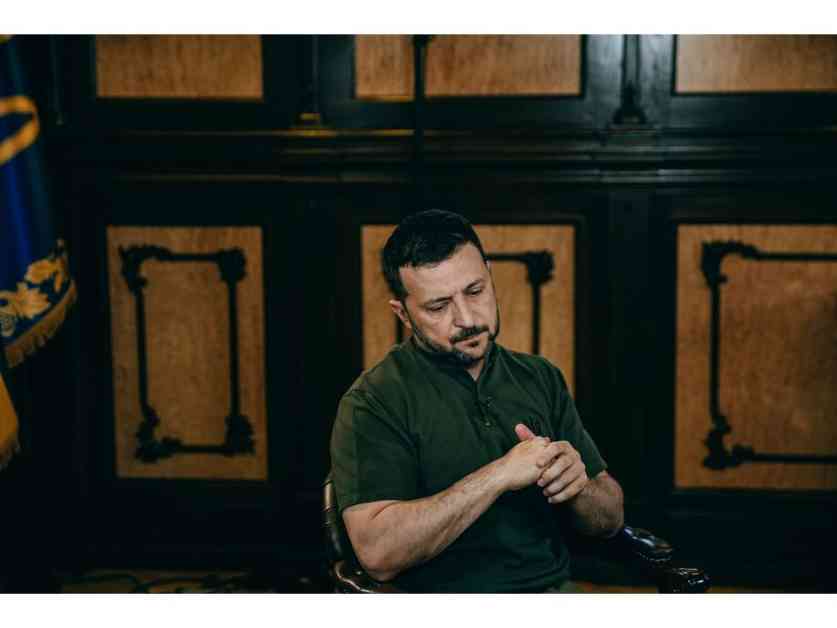Ukraine Concerned Over Delayed Funding Amid Frozen Russian Assets
Ukrainian officials are expressing growing concern over the delays in finalizing a deal that would unlock $50 billion in support by utilizing the profits from frozen Russian central bank assets. This delay is causing unease as the funds were initially intended to flow to Kyiv by the end of the year, as per a Group of Seven agreement reached in June. The agreement outlined a loan syndicate that would be repaid using profits generated over time from approximately $280 billion in frozen Russian funds.
Challenges in Implementing the Deal
However, the implementation of this plan has hit roadblocks due to demands made by the US and the potential risk of Hungary slowing down any EU-wide decision on support for Ukraine or sanctions against Russia. Talks surrounding the deal are happening behind closed doors, and the US is seeking more durable assurances that the frozen assets will remain immobilized until a just peace deal is reached and Russia compensates Ukraine for damages caused by the invasion.
Support for Ukraine Amid Ongoing Conflict
The funding from the frozen assets would provide much-needed support for Ukraine as the conflict with Russia approaches the 2-1/2 year mark. Ukrainian forces are currently facing challenges in halting a relentless Russian advance in the east while also redirecting resources to a new front in Russia’s western Kursk region following a surprise incursion this month.
Timeline for Decision-Making
While the G-7 deal’s timeframe extends to the end of the year, Ukraine requires a decision by next month to align with a funding review by the International Monetary Fund. This review will involve ensuring that Kyiv’s budget requirements are met. Ukrainian President Volodymyr Zelenskiy emphasized the urgency of the situation, stating that decisions need to be made promptly to address the ongoing financial needs of the country.
Frozen Russian Assets and Compensation
Ukraine’s allies froze the assets of the Central Bank of Russia, most of which are held in Europe, after the Kremlin’s forces invaded in February 2022. The Western nations are advocating for the use of these funds to compensate for damages incurred during the conflict and to facilitate the reconstruction of Ukraine post-war.
Challenges in EU Decision-Making
The European Union has been presented with options to extend the freeze on the assets for a longer period, but reaching a consensus among all 27 member states has proven challenging. Some officials are skeptical about finding a solution, particularly given Hungary’s history of obstructing efforts to renew sanctions measures for extended periods.
Political Implications and Diplomatic Efforts
As the issue gains prominence on the political agenda, discussions around the frozen assets are expected to resume among EU diplomats following the summer break. Germany, a key player in the negotiations, has reaffirmed its commitment to providing aid to Ukraine, highlighting the G-7 agreement as a crucial new funding source. Chancellor Olaf Scholz emphasized the technical complexities of the deal but expressed confidence in meeting the year-end deadline.
Financial Impact and Distribution of Funds
The central bank proceeds, estimated to be worth as much as €5 billion annually, would require each G-7 member to cover their portion of the loans if the assets were to be unfrozen. The proposed pact envisions loans from the EU and the US totaling around $20 billion each, with additional contributions from the UK, Canada, and Japan. Euroclear, the Belgium-based clearing house where the sanctioned assets are held, reported €173 billion in assets as of June, with an initial €1.6 billion installment released to Kyiv in July.
Conclusion
The delayed funding from frozen Russian assets has put Ukraine in a precarious position as it navigates the ongoing conflict with Russia. The need for swift decisions and concrete mechanisms to unlock the support outlined in the G-7 agreement is critical for Ukraine’s stability and recovery efforts. As diplomatic negotiations continue, the international community must work together to ensure that the frozen assets are utilized effectively to address the humanitarian and financial challenges facing Ukraine.






















